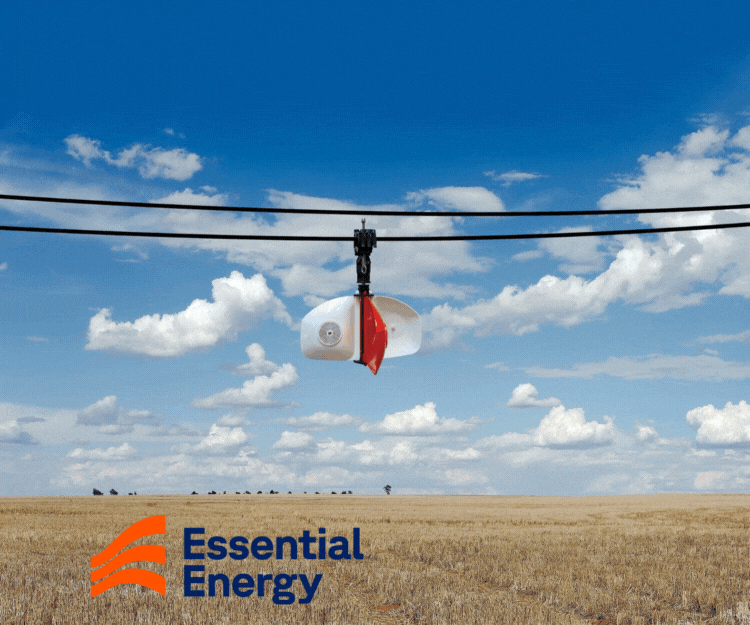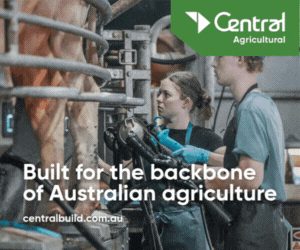1MG FlippingBooks
Leaders Speak
“Real innovation in agriculture isn’t just about high-tech tools—it’s about making sure knowledge reaches the people who need it. Farmers deserve more than equipment; they need support to turn science and data into action. Bridging that gap is key to building a future that works for everyone.”
“In times of transformation, it’s the people who drive true lasting change. The strength of any organisation lies in empowering teams who understand the unique needs and challenges of those they serve. By embracing innovation and fostering collaboration, we turn ideas into impact, fuelling progress, and resilience. As we navigate change, it’s the dedication, adaptability, and insight of an organisation’s people that ensures we sustain growth, create value, and deliver a strong future together in agriculture”.
“The success of Australian agriculture to date, coupled with growing food needs in a world where financial, environmental, and human capital are ever evolving, provides exciting challenges.
Establishing the true price of agricultural produce and improving the security and ease of transactions is critical to industry fulfilling its value potential.
An independent exchange aims to harness agriculture's proactive, innovative, and collaborative identity to build and operate more efficient and secure markets for broader industry benefit.”
“The production of agriculture has changed significantly in recent years with, for instance, data performance recording a key factor for livestock producers selecting their breeding stock. The platform of the traditional agricultural show is still, as a reinforcer of these advanced technologies, very relevant and is great for producers to compare their own product in the marketplace. The development of young people is particularly important for the continued running of agricultural shows into the future. Fortunately, lots of training and education programs are available to rural and remote students for the supply of the next generation of judges and handlers of livestock at agricultural shows in decades to come. These volunteers are a critical component for the future of agricultural shows as it takes a lot of talented and hard-working people to organise these annual celebrations of agricultural production in local regional areas and the major metropolitan centres.”
“In navigating Australia's future, we must boldly embrace the challenge of climate change with creative and innovative responses. We require daring initiatives that are shaped by strategic foresight through fostering a culture of relentless curiosity that unlocks the value of new ecosystem markets. To achieve our 2035 goals, we must demonstrate how Regenerative Agriculture is a more sophisticated and more profitable approach. Let’s refocus on mainstreaming new markets as a funding model for transformative growth.”
“Despite technological advancements, weeds remain an ever present cost to Australian agricultural production (over $5 billion annually) due to their capacity to spread, compete, persist and adapt to repeated attempts at control. Weeds are forever changing. The development of herbicide resistance is a classic example. Yes, we need new techniques, but as farmers have long seen, there are three more fundamental dimensions for success (3D weed control) - Deliberation (planning a strategy), Diversity (mixing up control methods) and Dedication (sticking with it) – with these in mind one can weed it and reap the benefits!"
Professor Brian Sindel
University of New England
“Rugby League and regional Queensland have been strong partners for over a century. I’ve been lucky enough to experience bush footy in many forms first - hand, including Ikin family road trips to junior carnivals, coaching clinics in Quilpie, volunteer meetings in Mount Isa, the Adrian Vowles Cup in Charleville, and QRL Country Round games in Miles and Pittsworth. And once you’ve had the bush footy experience in Queensland you quickly learn how much the game means to people in regional communities. This is why the QRL is committed to supporting the many thousands of volunteers who make bush footy possible, because strong community rugby league clubs help strengthen the communities they represent.”
In order to revolutionize Australia's fruit cultivation and marketing, it is crucial to reassess our approach. As an industry, we must inquire whether we possess a comprehensive understanding of consumer preferences. Since consumers are the ones investing their hard-earned money in purchasing fruit, it is essential to prioritize their needs and requirements. By exploring the potential of novel fruit varieties with exceptional flavour and quality attributes, we can align our production and marketing strategies to fully cater to the consumer's expectations. ANFIC assumes a pioneering role in advancing fruit improvement in Australia, with a steadfast commitment to consumer-centric initiatives.
“I look at Australian agriculture, and the lives of individual farmers through my three primary lenses: as sheep farmer, agro economist, and as head of a key body devoted to pest control. What counts most in the development of our growing industry? Information is king, those who harness it, benefit. Applied R&D is our key cutting-edge advantage. Applying R&D creates meaningful innovation. These together create productivity, thus higher profits. These are the key themes of The Australian Farmer digital journal. When taken all together they make a virtuous circle.”
“Land-forming technologies are advancing toward full automation in agriculture, though this innovation may still be years away. Technologies today are pushing efficiency and optimisation to new heights. A convergence of technology, research, and on-farm testing is propelling this progress. Breakthroughs in precision soil mapping, artificial intelligence modelling, and sustainable design are shaping a future where science tackles the complex challenges of productivity and resilience in agriculture.”
“In a world that challenges us on a day-to-day basis, it is our responsibility to ensure tomorrow's working generation is provided with the foundations to succeed through the decisions we make today. It is our duty within our green life industry to embrace these challenges and put in place environmental practices that not only protect the land that we work on but also as a by-product of what we grow and sell; turf becomes one of the unsung heroes when dealing with climate change.”
"The recent explosion of Artificial Intelligence is driving significant changes in the way agriculture can benefit from digital technology. Increasing amounts and better quality of data, rapid advances in algorithms and more powerful computing hardware are enabling researchers and entrepreneurs to rapidly develop solutions that can be applied throughout the supply chain. The challenge is to design robust solutions with the end-users in mind, that can be integrated with existing workflows and can be adapted to work across industries and geographies.”
Frank D’Emden
Former President of Society of Precision Agriculture Australia.
“In an age where pseudo-science abounds or the science seems to end up telling two opposing stories, those affected by scientific endeavours must scrutinise the ethics and credibility of the chosen research method – both its design and implementation. Like the principles and values found in leadership, practicing integrity, asking the hard questions and welcoming different opinions results in more robust and reliable scientific outcomes. Fertilizer Australia’s member companies are committed to employing proven scientific methods which ensures the sustainable and responsible use of fertilisers across the agricultural industry. This fierce adherence to rigour and quality protects the social licence for growers to use fertilisers safely and effectively and assists Australia to feed and clothe the world.”
I am privileged to have a leading role in identifying agricultural research and adoption priorities within the livestock industries. I am cognisant of the complexities of industry funding and the tussle between providing long-term security of tenure for researchers, whilst at the same time inserting sufficient checks and balances into funding proposals to demand currency and relevancy of work to the end-user. I understand that ultimately this process, which relies on a culture of trust and respect between the parties and where agricultural producers feel empowered to contribute to the research because their input is acted upon, must be about enhancing the circumstances of Australian farmers.”






















